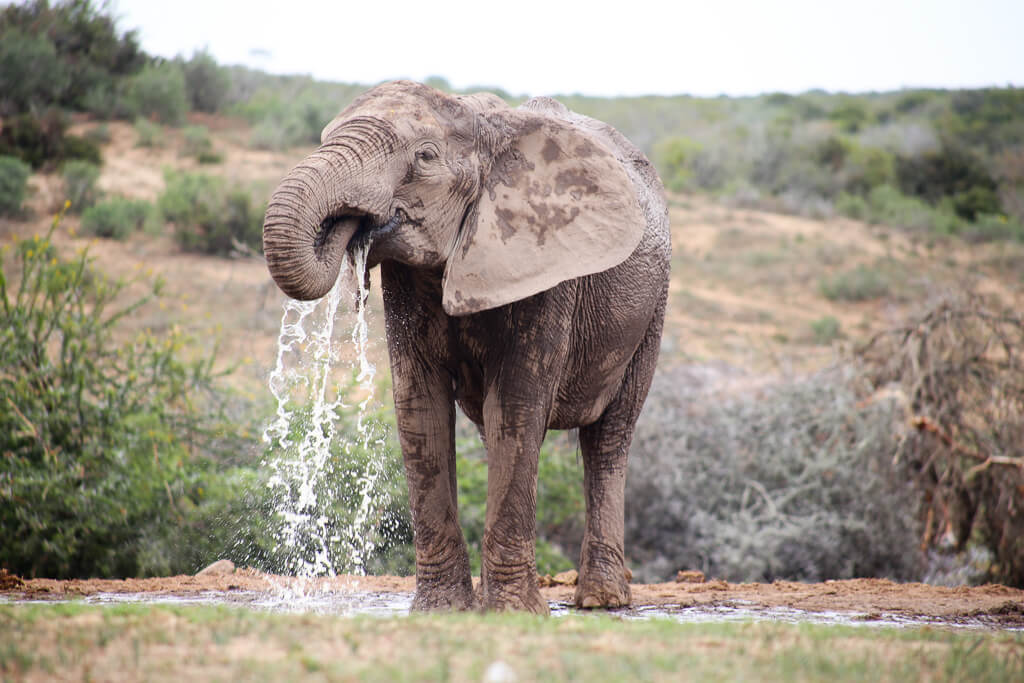8 Incredible Wildlife Encounters In Southeast Asia

If you’re anything like me, a trip abroad doesn’t feel quite complete without experiencing the native wildlife. Given that Southeast Asia is a region steeped in rainforests, mountains and national parks, you can expect to find a diverse range of exotic species — making it an ideal destination for animal lovers.
Sadly, many of these animals have become tourist attractions, and as a result, companies unethically exploit them for profit. Elephant riding and selfies with drugged-up tigers are just two examples of this.
Luckily, Southeast Asia is also home to a ton of ethical animal experiences, where travellers can enjoy intimate and up-close encounters in environments where the well-being of the animal is not compromised.
From orangutans in Sumatra, dolphins in the Mekong, and elephant sanctuaries in Thailand, Southeast Asia’s wildlife will not leave you disappointed. Here’s the lowdown on some of the best wildlife encounters in Southeast Asia.
Meet orangutans in Sumatra, Indonesia

There are only two places left in the world where you can see wild orangutans: Borneo and Sumatra. Both destinations offer a great opportunity to encounter orangutans in their natural environment, so it’s up to you which you may prefer to visit.
Personally, I think Sumatran orangutans are more beautiful, as they have longer and brighter orange hair than their cousins from Borneo. As such, Sumatra wins for me.
So, ditch the zoos and embark on a trek through the Sumatran jungle to find orangutans in their natural habitat.
All organised orangutan treks start on foot from Bukit Lawang, a tiny village on the outskirts of the Gunung Leuser National Park. Covering an area of almost 8000km², Gunung Leuser National Park is simply huge. Your guide will navigate you through this vast emerald jungle to track the orangutans — teaching you about their behaviour and pointing out other wildlife you may come across.
Explore the biodiversity in Taman Negara National Park, Malaysia

Taman Negara is Malaysia’s largest national park and one of the world’s largest rainforests, boasting one of the most wildlife-rich habitats in all of Southeast Asia. This 4343km² national park is home to Sumatran tigers, rhinos and clouded leopards, although sightings are exceptionally rare. You are likely, though, to catch a glimpse of some of the park’s 400 elephants. Dusky-leaf monkeys, spectacled langurs, great hornbills, tapirs, lizards and snakes are also frequently sighted in the park.
A series of hides on stilts are set up within the park which overlooks important waterholes, giving you a good chance of spotting some of the local wildlife.
Don’t forget to cast your eyes upwards, though, as the canopy is where you’re likely to see the most life, including monkeys, giant squirrels and colourful birds. You won’t be able to miss the hornbills; one of the park’s noisiest and most distinctive residents.
Spot dolphins in the Mekong River, Cambodia

The Irrawaddy dolphin is a species of river dolphin found in parts of South Asia. They inhabit stretches of the Mekong in Cambodia and Laos, and can also be found in pockets of India, Bangladesh and Myanmar.
They look kind of like beluga whales, and are incredibly distinctive, with a flat, curved face and a mouth that seems to pull up into a smile. Because of this, they’ve earned the adorable nickname “the smiling face of The Mekong.”
One of the best places to spot the Irrawaddy dolphin is in Cambodia — about 15-20 kilometres north from Kratie, near a small village called Kampi. Here, a small handful of local boatmen will be waiting to escort you out onto the water in a longtail boat, where they will cut the engine so you can watch the dolphins play.
Find dragons in Komodo National Park, Indonesia

As the name might suggest, Komodo National Park is home to the endangered Komodo dragon. In fact, this region of Indonesia — the islands of Komodo, Flores, Rinca and Gili Motag — is the only place in the world where Komodo dragons reside in the wild.
These magnificent reptiles can grow up to 3 metres in length and weigh in at as much as 70 kilos. Encountering them in the wild is an exhilarating experience. Opt to go on a trekking tour in search of this magnificent lizard, where local guides should be able to track them. You may also encounter species such as wild boars, monkeys, yellow-crested cockatoos and eagles on your way.
Visit The Gibbon Project, Thailand

On a mission to rescue Thailand’s gibbon population from tourist exploitation, The Gibbon Project is a beautiful sanctuary situated in Khao Pra Theaw, Phuket. The project aims to rescue, rehabilitate and release gibbons back into the wild, but those who cannot be released can be viewed from a viewing platform inside the sanctuary.
The Gibbon Project doesn’t charge entry, however, you will have to pay entry to the national park in which it resides.
See the tarsiers at the Tarsier Sanctuary, Philippines

At just 10-15cm high, tarsiers are the smallest primate on the planet. There are only a few places where you can find them in the wild, most predominantly in the south-eastern part of the Philippine archipelago, such as on the islands of Bohol and Palawan.
Given their tiny size and endangered status, they’re very difficult to spot in the wild. However, at the Tarsier Sanctuary in Bohol, Philippines, these little critters are free to come and go as they please.
You’re most likely to spot the tarsiers near the main trail of the sanctuary, as this is where they are fed. They also tend to have favourite spots to sit within the trees, so rangers at the sanctuary should be able to point them out. Be careful to keep your distance, be quiet and turn the flash off your camera, though — these guys are very shy.
Learn about elephants at Elephant Nature Park, Thailand

Sadly, the future of wild elephants in Asia is looking bleak. Habitat loss, poaching and hunting for captivity are causing elephant numbers to dwindle.
Elephants are one of the best-loved animals of all time. They’re beautiful, majestic and downright iconic. Because of this, people want to get up close and personal with them — and some tourist companies are only too eager to please. However, riding elephants is a cruel industry and I encourage you to choose ethical elephant experiences.
In the mountainous jungles surrounding the Thai city of Chiang Mai, you’ll find the well-respected Elephant Nature Park. Since it opened in 1990, the staff and volunteers of this beautiful sanctuary have rescued and rehabilitated dozens of elephants, along with cats, dogs and buffaloes.
If you opt to spend a day at the park, you’ll spend your time feeding the resident elephants and learning about elephant behaviour and conservation efforts. It’s a magical opportunity to witness these gentle giants in a natural setting.
Go snorkelling with The Dorsal Effect, Indonesia

Sadly, fishing for sharks is still a lucrative business in Southeast Asia. Shark fins are thought of as a delicacy across much of the continent, and the demand for them is high. In fact, 73 million sharks are wiped out every year — shark fins are sliced off at sea, and the body dumped back into the water.
The Dorsal Effect is a company on the Indonesian island of Lombok that provides local fishermen with alternative, environmentally-friendly careers. Their aim is to conserve sharks by converting fishermen into ecotourism guides, as it were.
Book a boat trip with The Dorsal Effect to go snorkelling among the coral reefs and explore some of the island’s most beautiful coves. You’ll be sure to see some spectacular marine life, while also knowing your tourist dollar is going towards protecting Lombok’s shark population.

About The Author
Lauren Pears is a freelance travel writer and blogger based in London. She writes about active adventure travel, aiming to encourage and inspire travellers to make the most of the great outdoors.
Thank you for reading! If you found this post useful, I’d be grateful if you would consider using the affiliate links below when planning your travels. I’ll make a small commission at no extra cost to you. This will help me to keep this blog running. Thanks for your support – Lauren.
Hotels – Booking.com
Hostels – Hostelworld
Cheap flights – Skyscanner
Travel insurance – World Nomads
Outdoor gear – Decathlon / GO Outdoors
Cycling gear – Chain Reaction Cycles
Alternatively, you could buy me a coffee to say thanks!








Great post. Southeast Asian countries are extremely rich in wildlife. As you have rightly said, tourists should focus on ethical wildlife experiences. It has become too commercialized nowadays.
Thanks for reading Rashmi! Yes, ethical wildlife experiences are the only option, in my opinion 🙂